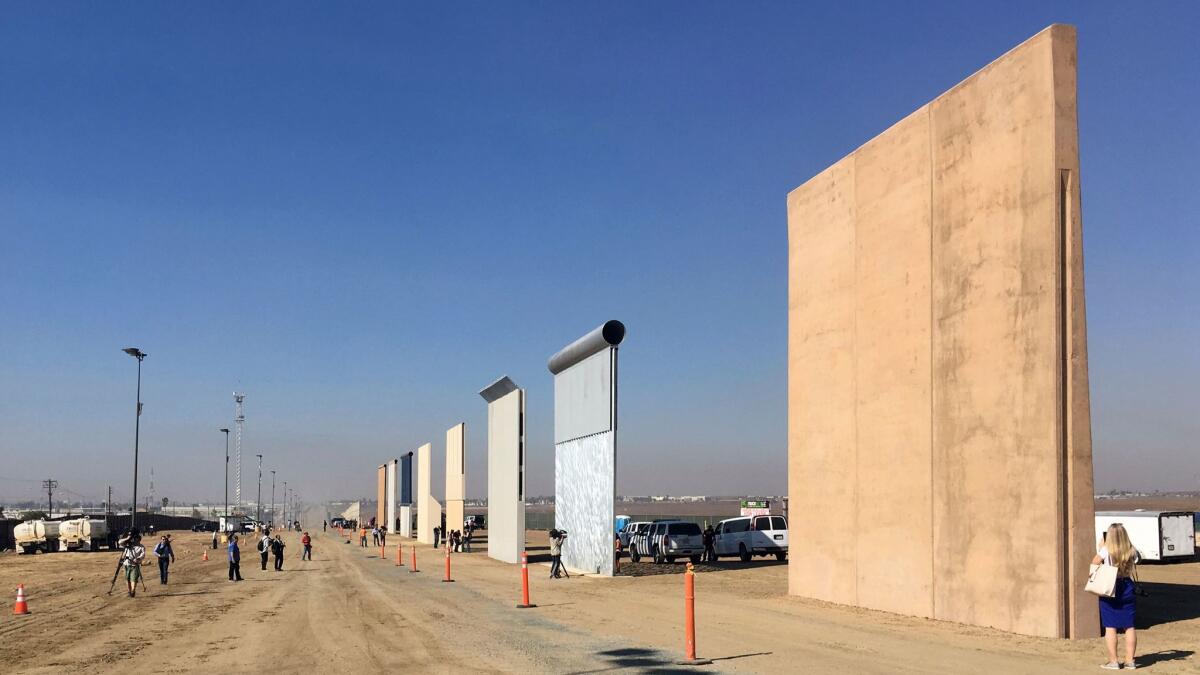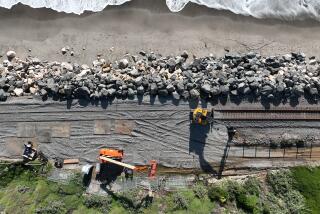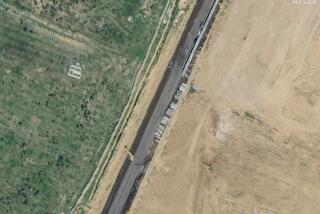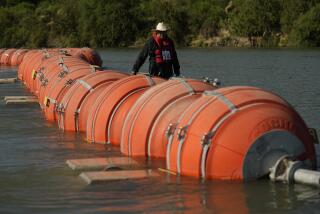The border wall prototypes have been built. The next step is to test them, officials say

Reporting from San Diego â The U.S. government announced Thursday that prototypes for President Trumpâs proposed border wall have been completed and will be subjected to punishment to test their mettle â by workers wielding sledgehammers, torches, pickaxes and battery-operated tools.
The testing could lead to officials concluding that elements of several designs should be merged to create effective walls, said Ronald Vitiello, U.S. Customs and Border Protectionâs acting deputy commissioner.
Results of the testing will dictate future wall construction, which has not yet been funded by Congress. The testing wonât start for at least a month because some concrete in the wall prototypes still needs to dry.
Vitiello told reporters that workers during the 30- to 60-day testing period will try to answer basic questions: âCan it be climbed? Can it be dug under? Can it withstand cutting tools?â
Here are some questions and answers about the border wall project.
Why were the prototypes built?
The U.S. has 654 miles of single-layer fence along the 1,954-mile border with Mexico, plus 51 miles of double- and triple-layer fence. This summer, the government picked six companies to build models to guide future construction.
The models are spaced about 30 feet apart, a few steps from a fence made from old steel airstrip landing mats separating San Diego from Tijuana.
Contractors were awarded between $300,000 and $500,000 for each model and had a month to build them.
What do the prototypes look like?
Each reaches the maximum allowed height of 30 feet or close to it â significantly higher than existing walls. Vitiello said the height was what struck him most on his tour Thursday.
The concrete walls are solid, preventing agents from seeing through them and into Mexico. Others are made of thick metal poles. Some are topped by round tubes, which are less vulnerable to grappling hooks.
One requirement is for the walls to be âaesthetically pleasingâ from the U.S. side.
What happens next?
Trump has asked Congress for $1.6 billion for the first installment of his wall. It would replace 14 miles in San Diego and build 60 miles in Texasâ Rio Grande Valley, the busiest corridor for illegal crossings.
Itâs unclear to what extent Trump will weigh in on the selection, and Vitiello said he didnât know if the president will visit the site. Trump has expressed interest in including solar panels, which are not part of any of the prototypes.
Three lawsuits â one filed by Californiaâs Democratic attorney general, Xavier Becerra â seek to block construction, claiming the administration overstepped its authority by waiving environmental reviews and other laws.
A hearing on the administrationâs request to dismiss the lawsuits is scheduled for Feb. 9 before U.S. District Judge Gonzalo Curiel, a target of Trumpâs scorn for his handling of complaints against the now-defunct Trump University.
More to Read
Sign up for Essential California
The most important California stories and recommendations in your inbox every morning.
You may occasionally receive promotional content from the Los Angeles Times.










